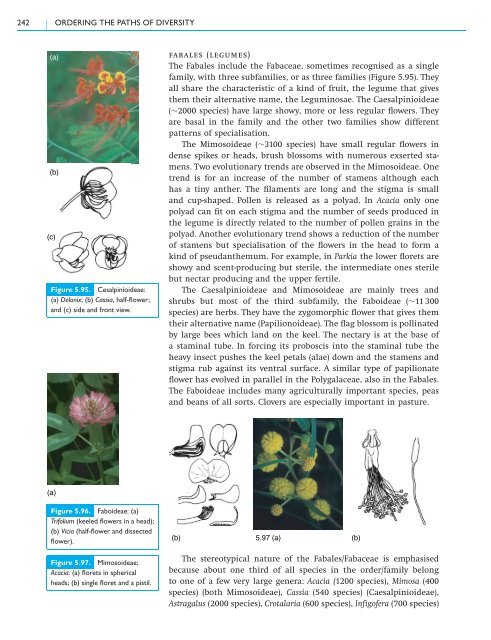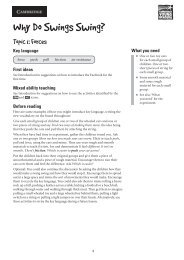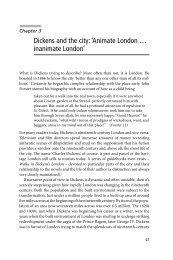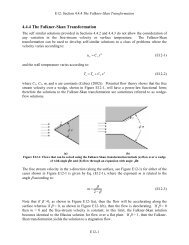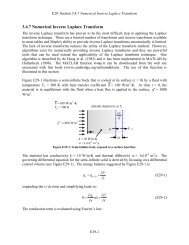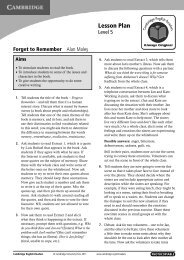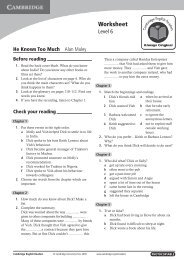5.3 Class Magnoliopsida – flowering plants - Cambridge University ...
5.3 Class Magnoliopsida – flowering plants - Cambridge University ...
5.3 Class Magnoliopsida – flowering plants - Cambridge University ...
You also want an ePaper? Increase the reach of your titles
YUMPU automatically turns print PDFs into web optimized ePapers that Google loves.
242 ORDERING THE PATHS OF DIVERSITY<br />
(a)<br />
(b)<br />
(c)<br />
Figure 5.95. Cesalpinioideae:<br />
(a) Delonix; (b) Cassia, half-flower;<br />
and (c) side and front view.<br />
(a)<br />
Figure 5.96. Faboideae: (a)<br />
Trifolium (keeled flowers in a head);<br />
(b) Vicia (half-flower and dissected<br />
flower).<br />
Figure 5.97. Mimosoideae;<br />
Acacia: (a) florets in spherical<br />
heads; (b) single floret and a pistil.<br />
fabales (legumes)<br />
The Fabales include the Fabaceae, sometimes recognised as a single<br />
family, with three subfamilies, or as three families (Figure 5.95). They<br />
all share the characteristic of a kind of fruit, the legume that gives<br />
them their alternative name, the Leguminosae. The Caesalpinioideae<br />
(∼2000 species) have large showy, more or less regular flowers. They<br />
are basal in the family and the other two families show different<br />
patterns of specialisation.<br />
The Mimosoideae (∼3100 species) have small regular flowers in<br />
dense spikes or heads, brush blossoms with numerous exserted stamens.<br />
Two evolutionary trends are observed in the Mimosoideae. One<br />
trend is for an increase of the number of stamens although each<br />
has a tiny anther. The filaments are long and the stigma is small<br />
and cup-shaped. Pollen is released as a polyad. In Acacia only one<br />
polyad can fit on each stigma and the number of seeds produced in<br />
the legume is directly related to the number of pollen grains in the<br />
polyad. Another evolutionary trend shows a reduction of the number<br />
of stamens but specialisation of the flowers in the head to form a<br />
kind of pseudanthemum. For example, in Parkia the lower florets are<br />
showy and scent-producing but sterile, the intermediate ones sterile<br />
but nectar producing and the upper fertile.<br />
The Caesalpinioideae and Mimosoideae are mainly trees and<br />
shrubs but most of the third subfamily, the Faboideae (∼11 300<br />
species) are herbs. They have the zygomorphic flower that gives them<br />
their alternative name (Papilionoideae). The flag blossom is pollinated<br />
by large bees which land on the keel. The nectary is at the base of<br />
a staminal tube. In forcing its proboscis into the staminal tube the<br />
heavy insect pushes the keel petals (alae) down and the stamens and<br />
stigma rub against its ventral surface. A similar type of papilionate<br />
flower has evolved in parallel in the Polygalaceae, also in the Fabales.<br />
The Faboideae includes many agriculturally important species, peas<br />
and beans of all sorts. Clovers are especially important in pasture.<br />
(b) 5.97 (a) (b)<br />
The stereotypical nature of the Fabales/Fabaceae is emphasised<br />
because about one third of all species in the order/family belong<br />
tooneofafewverylargegenera:Acacia (1200 species), Mimosa (400<br />
species) (both Mimosoideae), Cassia (540 species) (Caesalpinioideae),<br />
Astragalus (2000 species), Crotalaria (600 species), Infigofera (700 species)


